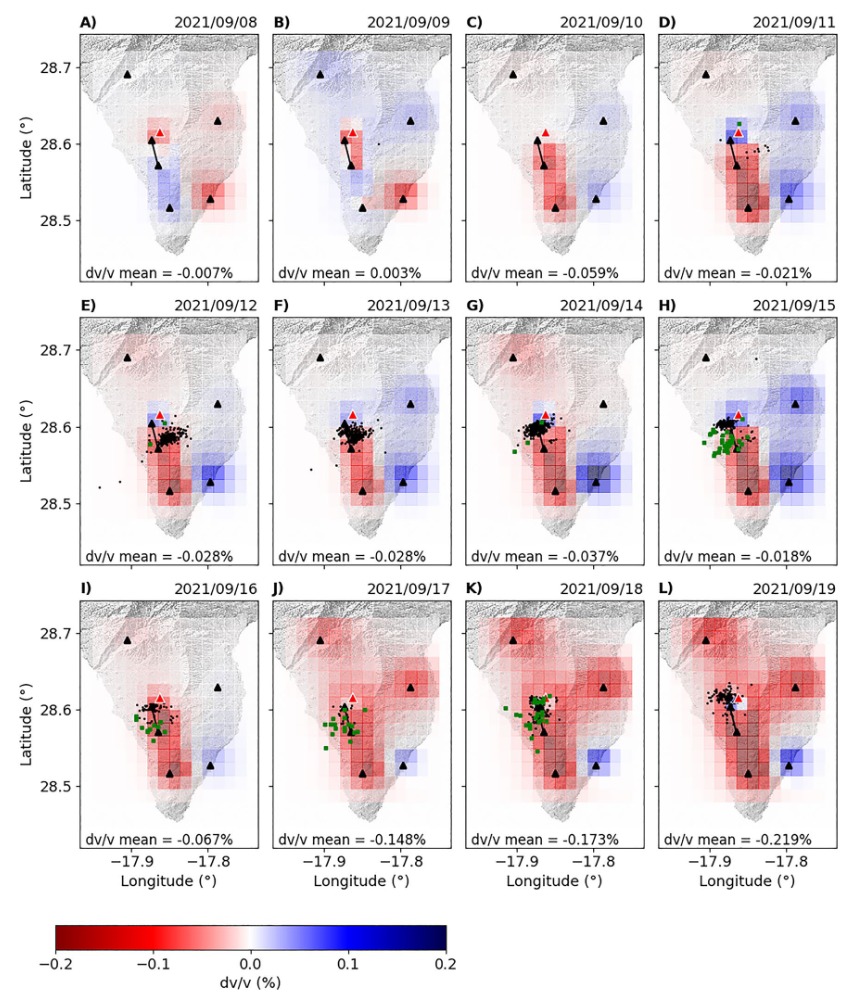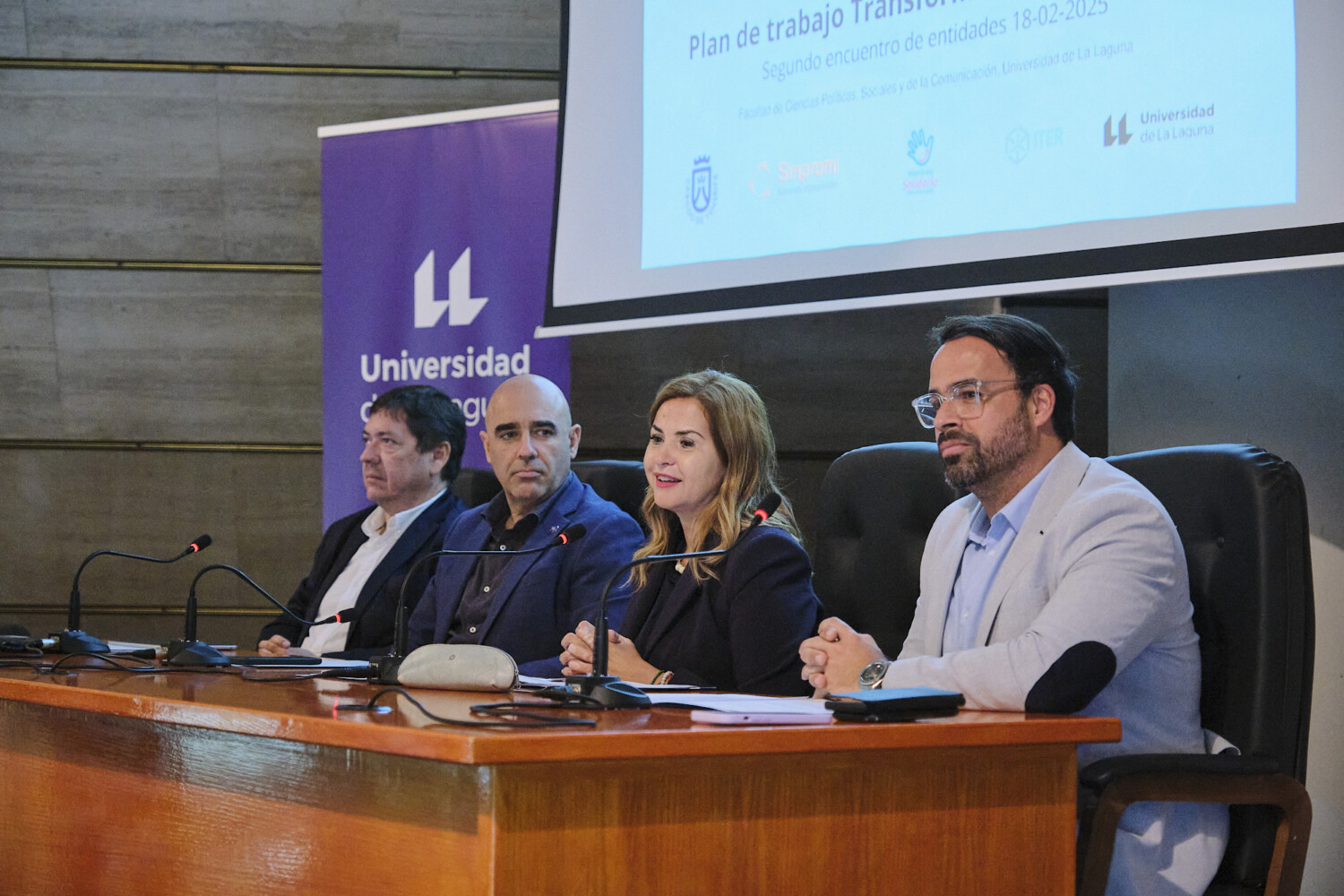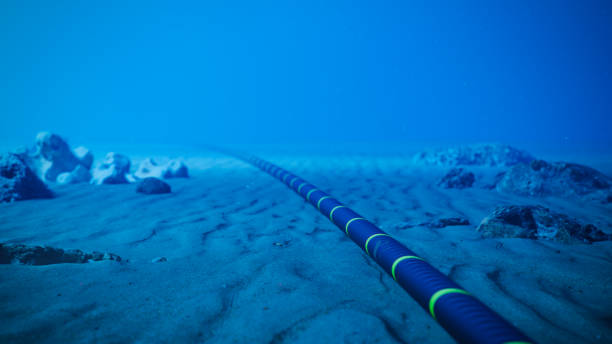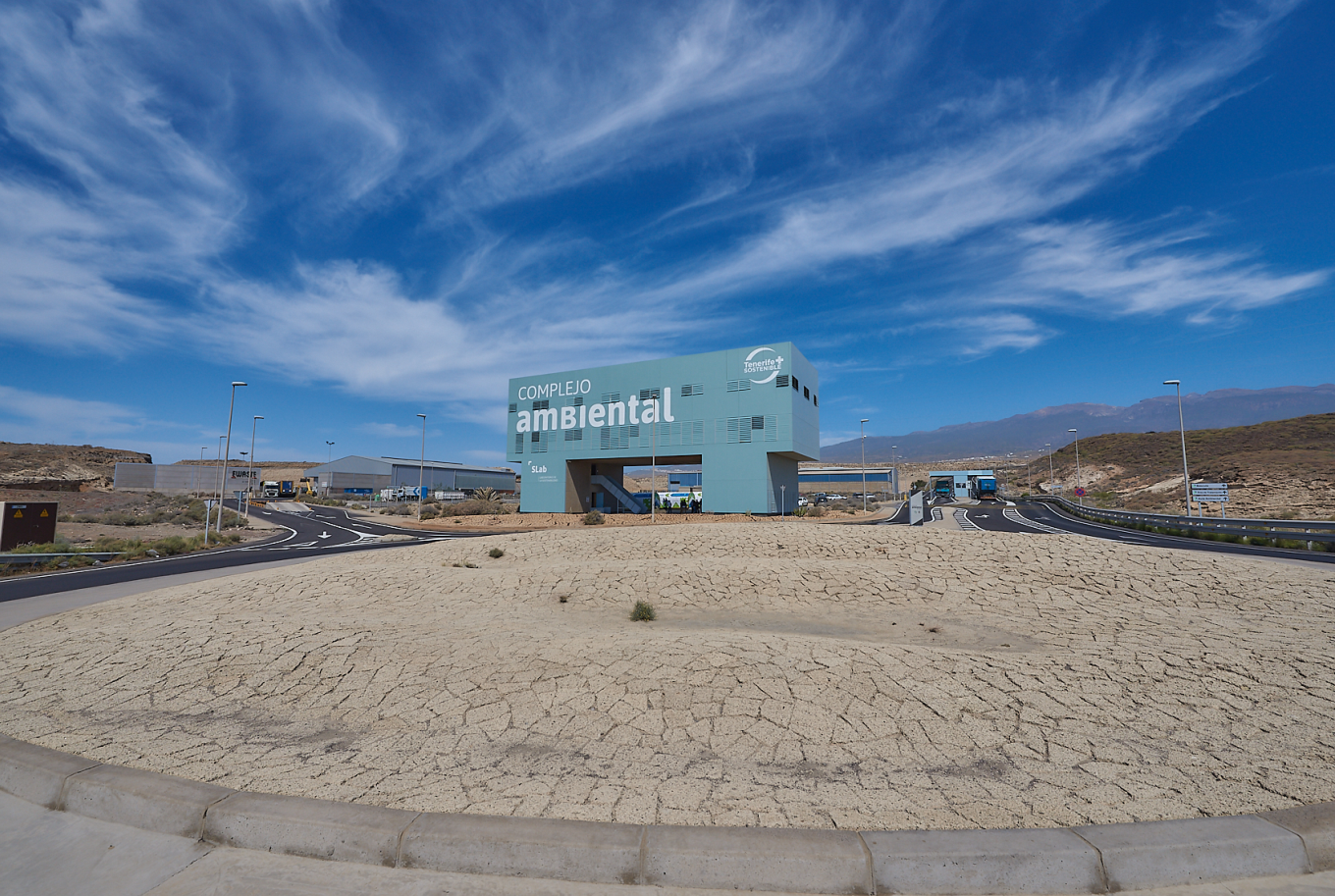The study, developed by INVOLCAN researchers in collaboration with researchers from various institutions and countries, has made it possible to estimate the variations in seismic velocities recorded in the subsoil of La Palma during the week prior to the eruption.
A new scientific study on the eruption of the Tajogaite volcano in La Palma, led by the graduate student Iván Cabrera-Pérez, who is developing his PhD Thesis at the Volcanological Institute of the Canary Islands (INVOLCAN) under the supervision of Dr. Luca D’Auria, has been recently published in the renowned international scientific journal Scientific Reports.
Researchers from various institutions and countries have collaborated in this work. Among them are experts from ISTerre (France), the Icelandic Meteorological Office, the Trofimuk Institute of Petroleum Geology and Geophysics (Russia), the Novosibirsk State University (Russia), the Department of Theoretical Physics and Cosmos of the University of Granada, the Andalusian Institute of Geophysics and the Disaster Mitigation Research Center of Nagoya University (Japan).
The onset of the volcanic eruption on the island of La Palma, on September 19, 2021, was characterized by seismic activity that was triggered just 9.5 days before the eruptive event. In this study, the advanced technique of seismic noise interferometry was applied to the data recorded by six broadband seismic stations, which has allowed estimating the velocity variations in the subsurface of La Palma during the week prior to the eruption.
The results obtained reveal that prior to the eruption, a reduction in seismic velocities was observed near the eruptive centers that subsequently opened. This zone coincides with the epicenters of a set of volcano-tectonic earthquakes located at shallow depths (< 4 km) and detached from the main set of deeper seismicity. The researchers interpret this decrease in seismic wave velocities as the effect of hydrothermal fluids released from the magma, which reached the surface faster than the magma itself.
This result confirms once again the critical importance of having automatic analysis systems for volcanic early warning, an activity in which INVOLCAN is investing considerable efforts and human and material resources.
This research work by INVOLCAN has been possible thanks to the projects VOLRISKMAC II (MAC2/3.5b/328), co-funded by the European Commission’s INTERREG V-A Spain-Portugal MAC 2014-2020 program, and Cumbre Vieja Emergencia, funded by the Ministry of Science and Innovation of the Government of Spain.
Article reference:
Cabrera-Pérez I., D’Auria L., Soubestre J., Przeor M., Barrancos L., García-Hernández R., Ibáñez J.M., Koulakov I., Martínez van Dorth D., Ortega V., Padilla G.D., Sagiya T. & Pérez N.M. Spatio-temporal velocity variations observed during the pre-eruptive episode of La Palma 2021 eruption inferred from ambient noise interferometry. Sci Rep 13, 12039 (2023). https://doi.org/10.1038/s41598-023-39237-9






